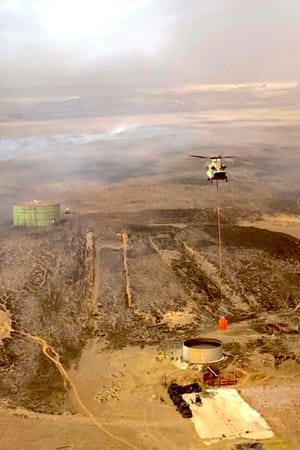
We rarely get to see behind the lines of fire and into the technology that keeps our troops safe on the battlefield.
But that changed recently when the advanced weapons technology company, AimLock, opened their doors ever so slightly to show us the auto-tracking, auto-aiming, and auto-stabilizing device that is being tested by the U.S. government right now.
“It certainly seems like [this technology becoming the future of combat] is an inevitability,” said Bryan Bochmon, CEO of the company. “Our adversaries are going to use automated lethal force at some point in the future because there are public examples where they have used it against some of their other enemies.”
Bochmon made our rules of engagement during our visit very clear: no close-up video or photographs within six feet, no video or photographs of employees, no shots that might reveal our location, and the answer to many of our questions would probably be “that’s private information.”
The technology was first created in 2014 when AimLock was founded. Bochmon describes it as a similar tech to what is found in precision-guided missiles; a computer that can track up to 100 targets at one time while moving from target to target in half of a second, delivering a precision strike each time. The technology, however, requires an authorized human operator to make the decision to deliver it.
I asked Bochmon what ethical considerations were discussed through the technology’s development.
“Absolutely,” he said. “Any time a new technology is created there are all kinds of intended consequences and unintended consequences. In general, all decisions about whether or not it’s appropriate to use lethal force are reserved for appropriate human operators, so when we build these machines, we make sure that the right human operators have full control and authority and decision to use force.”
Bochmon says outside of eliminating high-value targets, the technology is exceptionally useful at protecting our troops from threats on the battlefield such as mortar strikes and other lethal forces launched in the direction of US troops. In addition, Bochmon says a goal of the technology is to reduce collateral damage such as friendly fire by increasing accuracy and reducing human error.
Currently, AimLock has three weapons systems out for testing: a drone with an attached carbine underneath it, a buggy with a machine gun turret attached to the top, and a precision rifle. Each is remote-controlled by the human operator.
The technology is not available for public sale.








